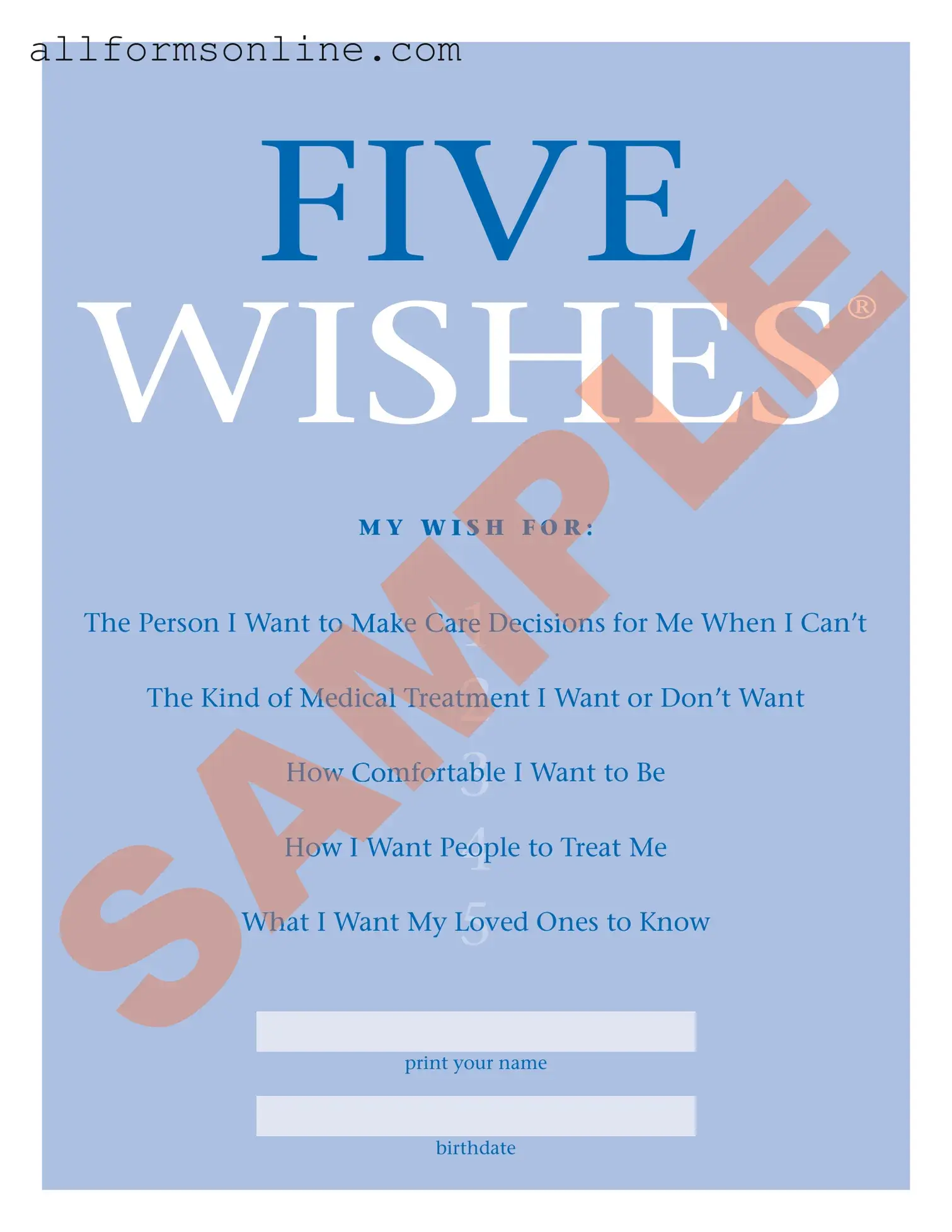Misconception 1: Five Wishes is just a standard living will.
While Five Wishes does function as a living will, it goes beyond the typical medical directives. It addresses personal, emotional, and spiritual needs, allowing you to express how you want to be treated in various scenarios, not just the medical specifics.
Misconception 2: Only elderly people need to fill out Five Wishes.
Five Wishes is for anyone aged 18 or older. It’s not just for the elderly; young adults, parents, and friends can benefit from having their wishes documented. Life is unpredictable, and having a plan is wise at any age.
Misconception 3: Filling out Five Wishes is complicated.
Many believe the process is daunting, but it’s actually quite simple. You just need to check boxes, circle options, or write a few sentences. It’s designed to be user-friendly, making it accessible for everyone.
Misconception 4: Five Wishes is not legally binding.
When filled out correctly and signed, Five Wishes is valid in most states. It’s recognized as a legal document that healthcare providers must follow, ensuring your wishes are honored.
Misconception 5: My family will automatically know my wishes.
Assuming your family knows your preferences can lead to confusion and stress during difficult times. Five Wishes encourages open conversations about your desires, ensuring your loved ones are informed and can advocate for you effectively.
Misconception 6: I can’t change my Five Wishes once it’s filled out.
You can absolutely change your Five Wishes at any time. If you decide to update it, simply fill out a new form and destroy the old copies. Make sure to inform your healthcare agent and family about the changes.
Misconception 7: Five Wishes is only for people with serious illnesses.
Even if you’re healthy, it’s beneficial to have a plan in place. Five Wishes helps you articulate your values and preferences, providing peace of mind for both you and your loved ones, regardless of your current health status.
